Ben Thompson of Stratechery wrote yet another brilliant article on Microsoft entitled: “It’s Time To Split Up Microsoft“. Highly recommended reading. I agree with Thompson in part, and I disagree with him in part. Let’s start with the parts where we agree.
1.0 Balmer
1.1 Innovation Inflation
The following is from Steve Ballmer’s 2004 memo “Our Path Forward:”
- “The key to our growth is innovation. Microsoft was built on innovation, has thrived on innovation, and its future depends on innovation. We are filing for over 2,000 patents a year for new technologies, and we see that number increasing. We lead in innovation in most areas where we compete, and where we do lag – like search and online music distribution – rest assured that the race to innovate has just begun and we will pull ahead. Our innovation pipeline is strong, and these innovations will lead to revenue growth from market expansion, share growth, new scenarios, value-add through services (alone and in partnership with network operators), and using software to open up new areas.” ~ Steve Ballmer, via Ben Thompson’s Article
Hmm. If you have to use the word innovation 7 times in the span of a mere 115 words, you probably don’t know what the word means. Dogs chase cars, but that doesn’t mean they know how to drive. And Microsoft can chase innovation all it wants, but that doesn’t mean they know how to innovate.
I suspect what Ballmer was actually talking about in his memo was iteration, not innovation. Iteration is highly valuable too, but it has nothing at all to do with innovation.
- Iteration is incremental improvements in an existing product or service.
- Innovation is unique, yes. And it is uniquely useful, yes. But its key characteristic is that it meets unanticipated, unexpected, or unarticulated needs.
The trouble with innovation is that truly innovative ideas often look like bad ideas at the time. That’s why they are innovative — until now, nobody ever figured out that they were good ideas. ~ Ben Horiwitz
Iteration is preserving the status quo by enhancing it. Innovation is radical. It’s revolutionary. It’s subversive. It doesn’t build upon the old market, it shatters the status quo and creates a new market to build upon.
Truth be told, Ballmer wanted nothing at all to do with innovation. When Ballmer wrote his memo in 2004, Microsoft was the undisputed king of the tech world. Innovation is a change agent and last thing Ballmer wanted was to change things. On the contrary, Ballmer wanted things to stay exactly the way they were.
1.2 Focus
- “Ballmer then listed (in his memo) 10 different areas of “focus”, the vast majority of which were themselves so broad as to be meaningless.” ~ Ben Thompson
I love the point Ben Thompson is making here. Focusing on ten things is the same as focusing on nothing. Yet Microsoft’s “focus” problem went even deeper than this. In a perverse way, Microsoft WAS very focused. Only they were focused on the wrong thing: their competitors. Jeff Bezos nicely sums up the problem with that approach:
If you’re competitor-focused, you have to wait until there is a competitor doing something. Being customer-focused allows you to be more pioneering. ~ Jeff Bezos
Does this sound like the Microsoft we all know and love? The Zune was a response to the iPod. Windows Phone 7 was a response to the iPhone. Surface was a response to the iPad. And all of those responses came to market late, late, late.
During Ballmer’s reign, Microsoft didn’t so much have a strategy as they had an anti-strategy. (See my article: Microsoft Is The Very Antithesis Of Strategy.) They waited for their competitors to act and then they reacted. They reacted far too slow and far too late. Even worse, they made bad choices, the worst of which was the choice to make their own hardware. The Zune flopped, the purchase of Nokia is a boondoggle and the Surface is a financial anchor weighing Microsoft down. Microsoft needs hardware like a fish needs a net.
1.3 Microsoft’s High-Water Mark
Ben Thompson:
- “Ballmer and Microsoft simply could not break free of their Windows-first mindset, and while it would be another 3 years before the iPhone arrived, it was this memo and what it represented that marked the beginning of Microsoft’s decline.”
A belief is not merely an idea the mind possesses; it is an idea that possesses the mind. ~ Robert Oxton Bolt
[pullquote]Before you criticize someone, you should walk a mile in their shoes. That way when you criticize them, you are a mile away from them and you have their shoes. ~ Dave Barry[/pullquote]
This is the point in my article where I’m supposed to trash Steve Ballmer for being shortsighted. But, truth be told, I have a lot of sympathy for him. The only thing harder than saving a dying company is saving one at the top of its game.
A company near death HAS to focus.
The absence of alternatives clears the mind marvelously. ~ Henry Kissinger
A company near death HAS to be innovative.
Mortal danger is an effective antidote for fixed ideas. ~ Field Marshal Erwin Rommel
[pullquote]Until you walk a mile in another man’s moccasins you can’t imagine the smell. ~ Robert Byrne[/pullquote]
Microsoft’s problem was they didn’t have a problem. Without the impetus of bankruptcy or any credible threat, they had little reason to change. In fact, they had NO reason to change and EVERY reason to stay the same. However, as Carrie Fisher put it, “There is no point at which you can say: ‘Well, I’m successful now. I might as well take a nap.'”
If everything’s under control, you are going too slow. ~ Mario Andretti
If everything seems to be going well, you have obviously overlooked something. ~ Steven Wright
In this business, by the time you realize you’re in trouble, it’s too late to save yourself. Unless you’re running scared all the time, you’re gone. ~ Bill Gates

1.4 Vertical Or Horizontal — Pick One, Not Both
Ben Thompson:
- “(T)ech companies ought to be either vertically/platform focused, with software and services that differentiate hardware (like Apple), or horizontally/service focused, with the goal of offering superior software and services on all devices (like Google and Facebook). To try and do both, as Ballmer explicitly did with his “Devices and Services” strategy, is to do neither well: differentiating your devices by definition means offering an inferior service on other platforms; offering superior services everywhere means commoditizing your own devices. “Devices and Services” was nonsense.”
I LOVE this.
Microsoft used to have a clear and simple business model. They made the operating system, they licensed the operating system to hardware manufacturers. The end.
Microsoft didn’t compete with their hardware manufacturers by selling hardware. They didn’t compete with their developers by selling software. ((There is one HUGE exception to this rule and that is Microsoft Office. Ben Thompson does a great job of explaining why this conflict worked and worked well — for a while — so I refer you to his article, “It’s Time To Split Up Microsoft“. I couldn’t have said it half as well.)) They competed with other operating systems and boy, did they ever compete. During the eighties, Microsoft squashed challenger after challenger and when the dust from the PC wars settled, the only rival operating system left standing was the Mac — and even it was on its metaphorical knees. ((STEVE WILDSTROM: “From the day that the IBM PC overtook the Apple ][, Microsoft software dominated the market. The Macintosh, introduced in 1984, never challenged MS-DOS or Windows for dominance.”
—
“Other rivals to Microsoft did indeed lose: Novell’s DR-DOS and IBM’s OS/2 operating systems disappeared, along with Netware, Novell’s once-dominant office networking system.”))
Today, of course, it’s a very different story. Microsoft still licenses its operating system to hardware manufacturers. But it also directly competes with those same hardware manufacturers by selling hardware of its own. And while Microsoft is currently making serious inroads into the business of providing internet services that run across all platforms, they continue to directly compete with the very same platforms that they are attempting to sell their services to.
No man can serve two masters: for either he will hate the one, and love the other; or else he will hold to the one, and despise the other. ~ New Testament, Matthew 6:24
It’s really, really tough to make a great product if you have to serve two masters. ~ Phil Libin, Evernote CEO
Two masters? Microsoft is trying to simultaneously serve THREE masters. Yikes!
Microsoft fits the definition of a business model ménage à trois: There are three of ’em, and they’re all trying to screw one another.

2.0 Nadella
2.1 Better Than Ballmer
Ben Thompson:
- “To understand why so many serious Microsoft observers were encouraged by Satya Nadella’s week-ago memo, “Bold Ambition and Our Core,” it’s useful to go back 10 years and read Steve Ballmer’s 2004 memo Our Path Forward.”
Hmm. Apparently “serious” Microsoft observers are more willing to overlook the serious problems with Nadella’s memo just because it’s better than Ballmer’s memo, while less serious Microsoft observers, like me, take those serious shortcomings more seriously.
A…speech should be like a lady’s dress—long enough to cover the subject and short enough to be interesting. ~ R. A. “RAB” Butler
[pullquote]He can compress the most words into the smallest idea of any man I ever met. ~ Abraham Lincoln[/pullquote]
Let’s set aside the fact that reading Nadella’s memo was like gargling with broken glass ((With apologies to Hugh Leonard)).
And let’s set aside the fact that what Nadella’s memo lacked in depth it made up for in length. ((With apologies to Chares de Montesquieu))
And let’s agree Nadella’s memo is better than Ballmer’s memo…so long as we also agree that still isn’t saying very much.
So what? At best that’s damning with faint praise. ((Damning with faint praise is an English idiom for words that effectively condemn by seeming to offer praise which is too moderate or marginal to be considered praise at all. In other words, this phrase identifies the act of expressing a compliment so feeble it amounts to no compliment at all, or even implies a kind of condemnation.)) Exactly what was it Nadella said in his memo that “serious” Microsoft observers could possibly have found even remotely encouraging?
2.2 Going Sideways
Ben Thompson:
- “In contrast to Ballmer’s anything-but-“focus,” Nadella was quite specific:”
- More recently, we have described ourselves as a “devices and services” company. While the devices and services description was helpful in starting our transformation, we now need to hone in on our unique strategy. ~ Satya Nadella
What a great start! (Well, technically, it’s not really a “start” since we’re already 558 words into Nadella’s memo. But let’s set that aside, for now.) This is great stuff. Nadella has tactfully repudiated his predecessor’s strategy without actually saying it in so many words. Further, he’s promising to hone in on Microsoft’s unique strategy. I’m all agog. Can’t wait to hear what’s coming next!
- “At our core, Microsoft is the productivity and platform company for the mobile-first and cloud-first world. We will reinvent productivity to empower every person and every organization on the planet to do more and achieve more.” ~ Satya Nadella
Seriously? That’s Nadella’s idea of honing in on Microsoft’s unique strategy? Prepare thyself for a MASSIVE rant.
Microsoft is a “platform” company? That could mean a lot of things. Or anything. Or nothing. Microsoft is a “productivity” company? Whoop-de-doo. Who isn’t? Microsoft is “mobile-first and cloud-first?” Newsflash: They can’t both be “first.” Microsoft will “reinvent productivity?” No, it won’t. You can’t reinvent productivity anymore than you can manufacture new antiques. Microsoft will “empower….” Ugh. Enough said.
- We will…empower every organization on the planet to do more and achieve more. ~ Satya Nadella
Ben Thompson seems to put particular stock in this phrase. I’ll discuss its “horizontal” business model implications below. However, in terms of defining Microsoft’s mission, it’s a complete dud. Microsoft is going to empower people to “do more and achieve more?” Wow, thanks for narrowing it down. Helping people “do more and achieve more” is about as non-specific, over-generalized, feel-good-but-means-nothing, applies-to-practically-every-company-that-ever-existed as it gets. That’s not honing-in, that’s zoning-out.
2.3 Teasing Out A Tortured Message
Ben Thompson:
- “Nadella was clear that focusing on “every person” meant focusing on every device as well:
- [Microsoft’s productivity apps] will be built for other ecosystems so as people move from device to device, so will their content and the richness of their services – it’s one way we keep people, not devices, at the center.” ~ Satya Nadella
This is exactly right. Nadella is making a choice here: productivity as a single unifying principle and, by extension, services based on people, not differentiation based on devices. Moreover, it’s a far more difficult and brave choice – obvious though it may be – than outside observers could likely understand. It was only a little over a year ago Ballmer declared, “Nothing is more important at Microsoft than Windows.”
Last week, Nadella said “No.” ~ Ben Thompson
Let’s break that analysis down.
- “(I)t’s a far more difficult and brave choice – obvious though it may be – than outside observers could likely understand.”
First, I concede I am an “outside observer.” However, I’m not willing to cede the interpretation of Nadella’s words solely to Microsoft insiders.
- “Nadella is making a choice here: productivity as a single unifying principle…”
Second, I’m totally not buying this. “Productivity” is far too broad a term to constitute a “single unifying principle.” And as for it being a “choice,” what exactly is Nadella choosing between: Productive and non-productive?
- “(S)ervices based on people, not differentiation based on devices.”
Third, what I think you are saying is you think Nadella is saying Microsoft is moving toward services, and away from devices. (If that’s what Nadella actually meant to say, it would have been nice if he had actually said it.) Further, I think you are saying you think Nadella is saying Windows is no longer Microsoft’s be all and end all. And — despite the tortured path used to get us there — I kinda agree with that interpretation. Unfortunately, Nadella’s actions — and Ben Thompson’s own analysis — disagree.
2.4 Two Problems
How do I know Ben Thompson’s analysis doesn’t support the suggestion Microsoft is moving away from devices and toward services? Because he says so in his article when he discusses Windows, here ((BEN THOMPSON: “For all the talk of moving beyond Windows (and Windows Phone), I am deeply skeptical Microsoft can truly pursue its potential as a software and services company as long as Windows is around.”)) and when he discusses Nokia, here ((BEN THOMPSON: “The effects of (the Nokia) deal – and understanding why it was made – have convinced me that Microsoft cannot truly reach its potential as a services company as long as Windows and the entire devices business is in tow.”)) and here ((BEN THOMPSON: “When Nadella took over earlier this year Microsoft had not only missed the mobile boat, he was now saddled with a $7.2 billion dollar anchor and 34,000 new employees. That’s the thing about last week’s layoffs: even after shedding 18,000 employees Microsoft will still be about 16% bigger than they were before the acquisition, and still tightly bound to a devices group that is working at diametrically opposed goals from the software and services businesses that are Microsoft’s future.”)) and when he discusses devices, here. ((BEN THOMPSON: “I’m bothered by the phrase “We have a big opportunity.” For (COO Kevin) Turner, the opportunity is in growing that 14%. As quoted by Gregg Keizer: We want to go from 14% to 18%, from 18% to 25%, from 25% to 30%. That’s the beauty of this model … [the opportunity] is much bigger than anything we’ve had in the past.
—
Turner is still talking about devices, and it’s really too bad.”))
And how do I know Satya Nadella isn’t moving Microsoft from devices and to services? Because his actions speak far louder — and far clearer — than do his words.
We know what a person thinks not when he tells us what he thinks, but by his actions. ~ Isaac Bashevis Singer
I’ll agree Satya Nadella has said “yes” to services. But what has he said “no” to? The Windows operating system licensing business model and the hardware business model (Nokia phones and Surface Hybrid) and the services business model all continue to co-compete, one with the other. Nadella is doing what Ballmer always did. When faced with a choice, he has chosen not to choose. When faced with a decision between business models, he has decided not to decide.
Action expresses priorities. ~ Gandhi
Yes, action expresses priorities. And inaction obscures them.
It’s true services may gain primacy at Microsoft. However, so long as three business models remain — like nesting dolls, one within the other — Microsoft’s internal conflicts and external turmoil will continue, unabated.
Deciding what not to do is as important as deciding what to do. That’s true for companies, and it’s true for products. ~ Steve Jobs

Conclusion
Okay, let’s agree Nadella isn’t the best communicator in the world. That’s too bad because words can make your heart soar…or they can make your head sore. ((Tip of the hat to Dr. Mardy and his aphorisms.)) However, words aren’t everything. When the Nokia phone line is cut; when the Surface hybrid is cut; then we won’t have to read Nadella’s memos to know where Microsoft is headed. Nadella’s actions will speak far louder than any words could.
A man is judged by his deeds, not by his words. ~ Russian Proverb
Until that day, Microsoft should be careful that they don’t become a joke:
A Jewish woman had two chickens. One got sick, so the woman made chicken soup out of the other one to help the sick one get well. ~ Henny Youngman
Microsoft is in danger of making chicken soup out of their healthy business divisions in order to sustain their ailing businesses. If they’re not very, very careful, they’ll end up with a bunch of dead chickens and egg all over their face.
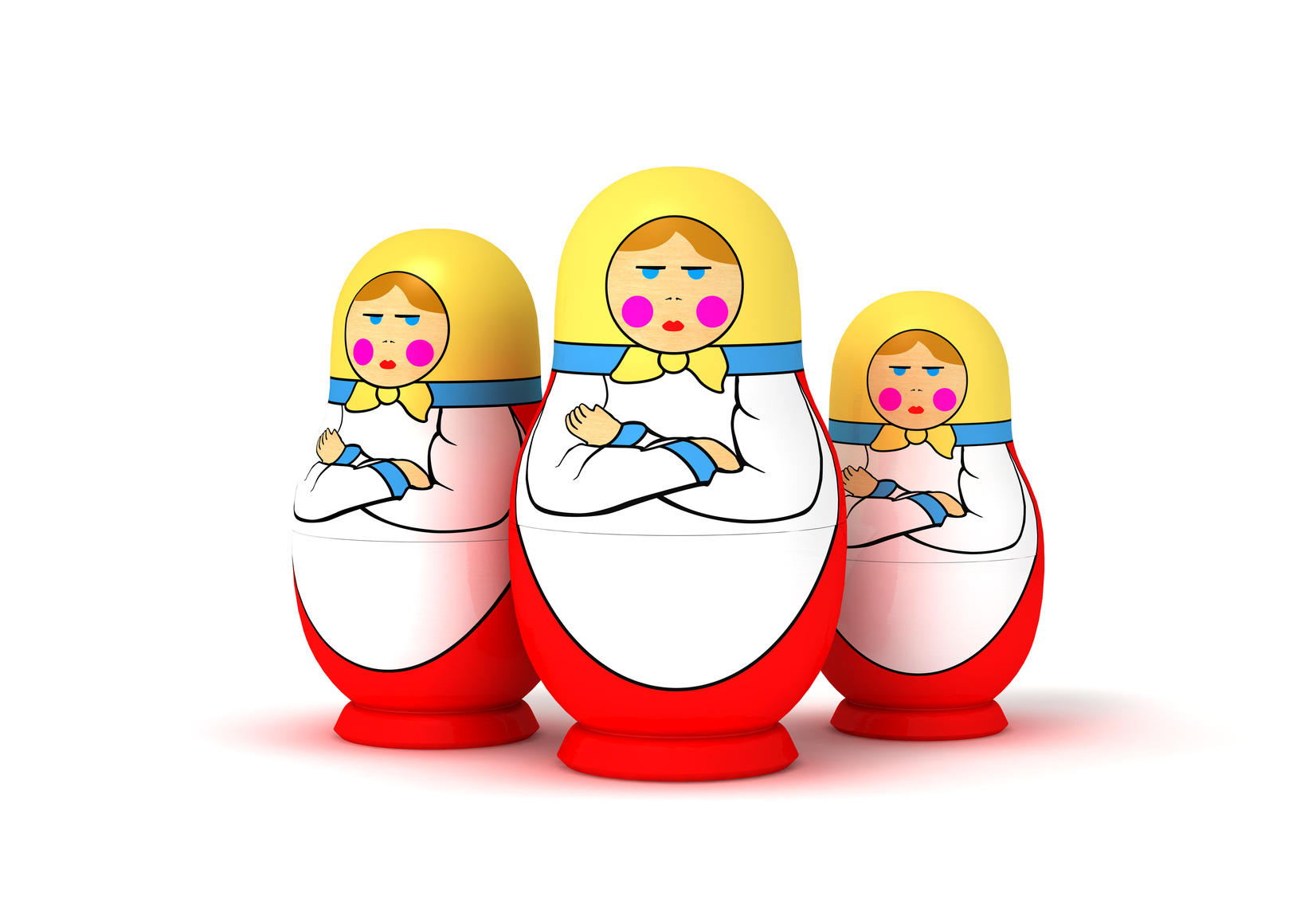










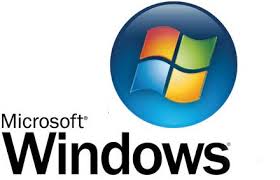




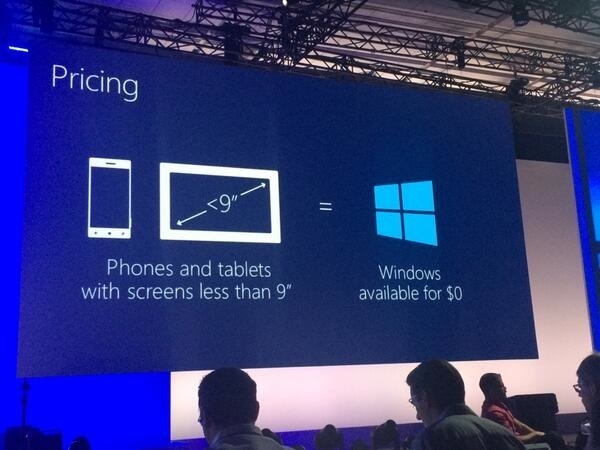
 In my opinion, John Gruber on screen at Microsoft’s Build Conference in 2014 is the poor man’s equivalent of when Bill Gates towered over Steve Jobs at Macworld in 1997.
In my opinion, John Gruber on screen at Microsoft’s Build Conference in 2014 is the poor man’s equivalent of when Bill Gates towered over Steve Jobs at Macworld in 1997. It’s still early days for Microsoft 2.0.
It’s still early days for Microsoft 2.0.
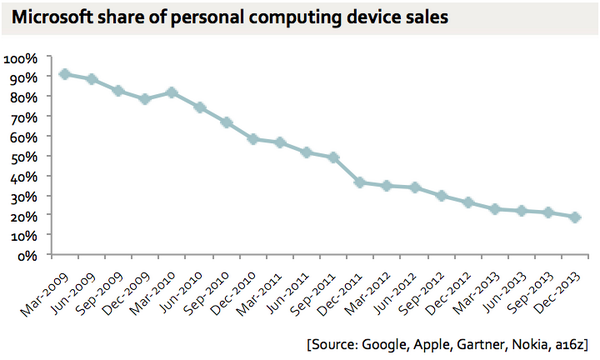
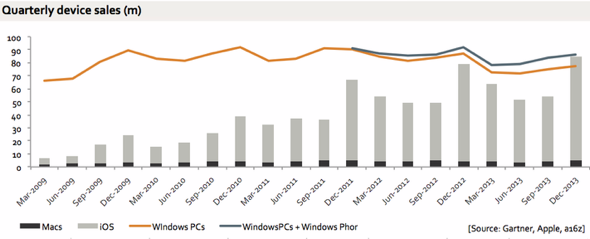
 1) Shifting to a Device & Service Model;
1) Shifting to a Device & Service Model;